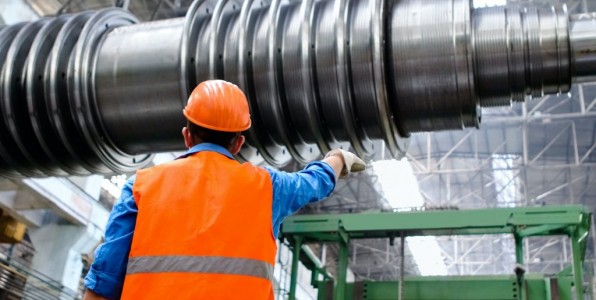How does hi vis workwear work?

How does hi vis workwear work?

If you regularly work on-site, then you’ll understand exactly why hi vis workwear is so important. Making sure you’re visible on an incredibly busy and noisy construction site really can mean the difference between safety and life-threatening injuries.
The combination of highly fluorescent material alongside reflective tape creates the optimum design to ensure you’re still visible against even the busiest backdrops. But have you ever considered how exactly hi-vis clothing works? We’re going to take a closer look at how exactly it shines bright enough to keep so many of us safe on-site every single day, but first let’s take a look at how hi vis workwear came about.
When was high visibility workwear born?
In the UK hi vis workwear was first issued to railway workers well over 50 years ago now, in the 1960s. It was first trialled by Glaswegian railway workers who were given fluorescent orange jackets, then known as ‘fireflies’.
Around this time electric railways were becoming faster and these jackets were deemed essential to ensure that the workers were visible by train drivers from long distances of up to half a mile away. Unsurprisingly, these trials were a huge success, and soon after hi-vis jackets became essential for all British Railway workers.
The next logical step was to introduce high visibility workwear to any profession where workers would be in close proximity to moving vehicles or working in poor visibility conditions. And therefore hi viz workwear as we know it today, was born.

How exactly does hi vis work?
Let’s take a look at the science behind hi vis material – first of all, the fluorescent material which makes up the bulk of hi viz workwear. On-site you’ll most commonly see yellow and orange hi vis clothing, as these are arguably the most visible colours to the human eye. But what is it exactly that makes these fluorescent colours so bright?
It’s all down to the way in which the ultraviolet rays of the sun react with the fluorescent colours. This reaction makes them appear to ‘glow’, meaning that in natural daylight these colours will be at their brightest. The less sunlight or UV rays for the material to interact with, then the less these fluorescent colours will appear to glow. Which is why they’re cleverly paired with reflective tape – we’ll come onto that next!
Arguably the most important aspect of high visibility workwear is the reflective strip detailing. These reflective strips are essential to help ensure you’re visible at night time and in low lighting, where the fluorescent colours won’t be picking up on any UV lights to react with.
There are generally two types of reflective tape found on hi vis workwear, these are micro-prismatic tape and glass bead reflective tape. Let’s take a look at the differences between the two and how exactly they work.
Micro-prismatic Tape
Micro-prismatic tape is made from a unique type of plastic vinyl which contains lots of microscopic prisms. These tiny prisms inside the vinyl work by bouncing any light that comes into contact with the tape around internally, before then reflecting it back out. Micro-prismatic tape is known for its ability to reflect light at a distance whilst also maintaining it’s intensity – keeping you incredibly safe whilst working in dark conditions.
Glass Bead Reflective Tape
Glass bead reflective tape is probably the reflective tape you’ll have seen most commonly on commercial hi vis workwear including hi vis vests, this is because it’s such an affordable material which is also incredibly easy to add to a garment. Glass bead reflective tape shines a very bright white when it comes into contact with direct light, therefore providing a high level of safety for its wearer.
When working on a construction site, there are plenty of PPE considerations to bear in mind but hi vis workwear has to be one of the most important steps to take to protect your employees or yourself. Understanding exactly how it works to keep you safe is key in realising quite why it’s become so essential.
Comments are closed